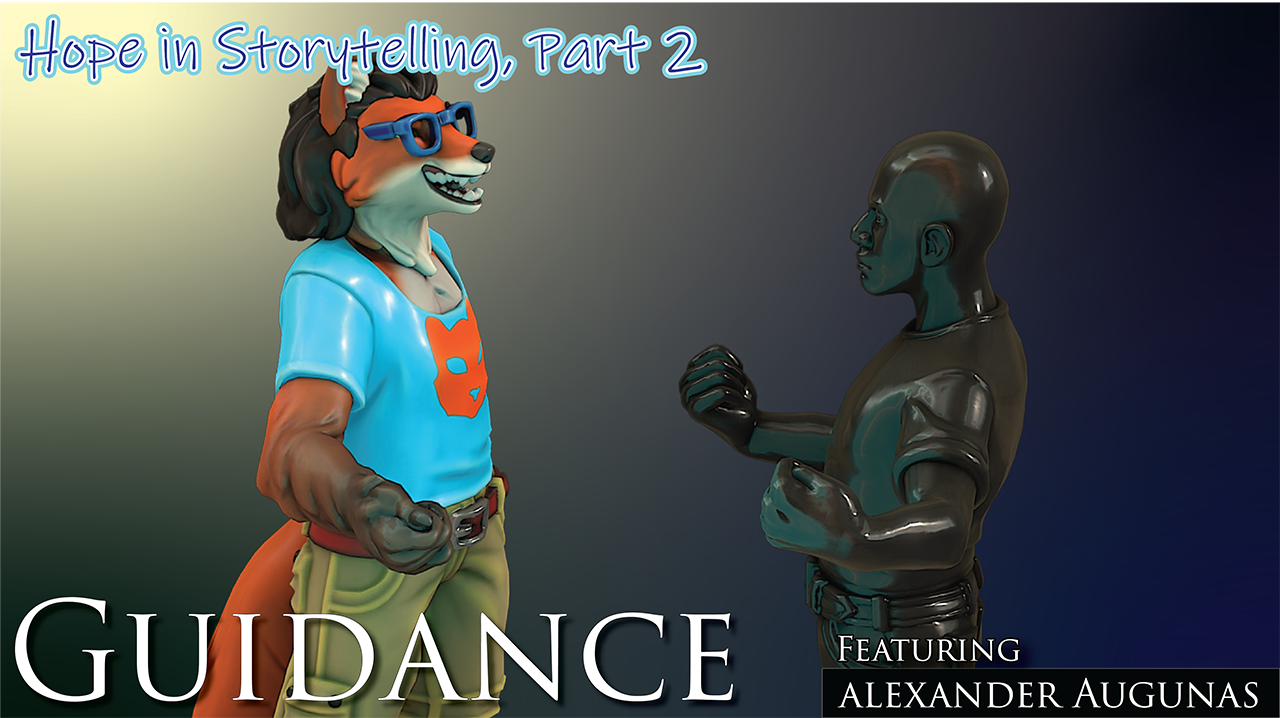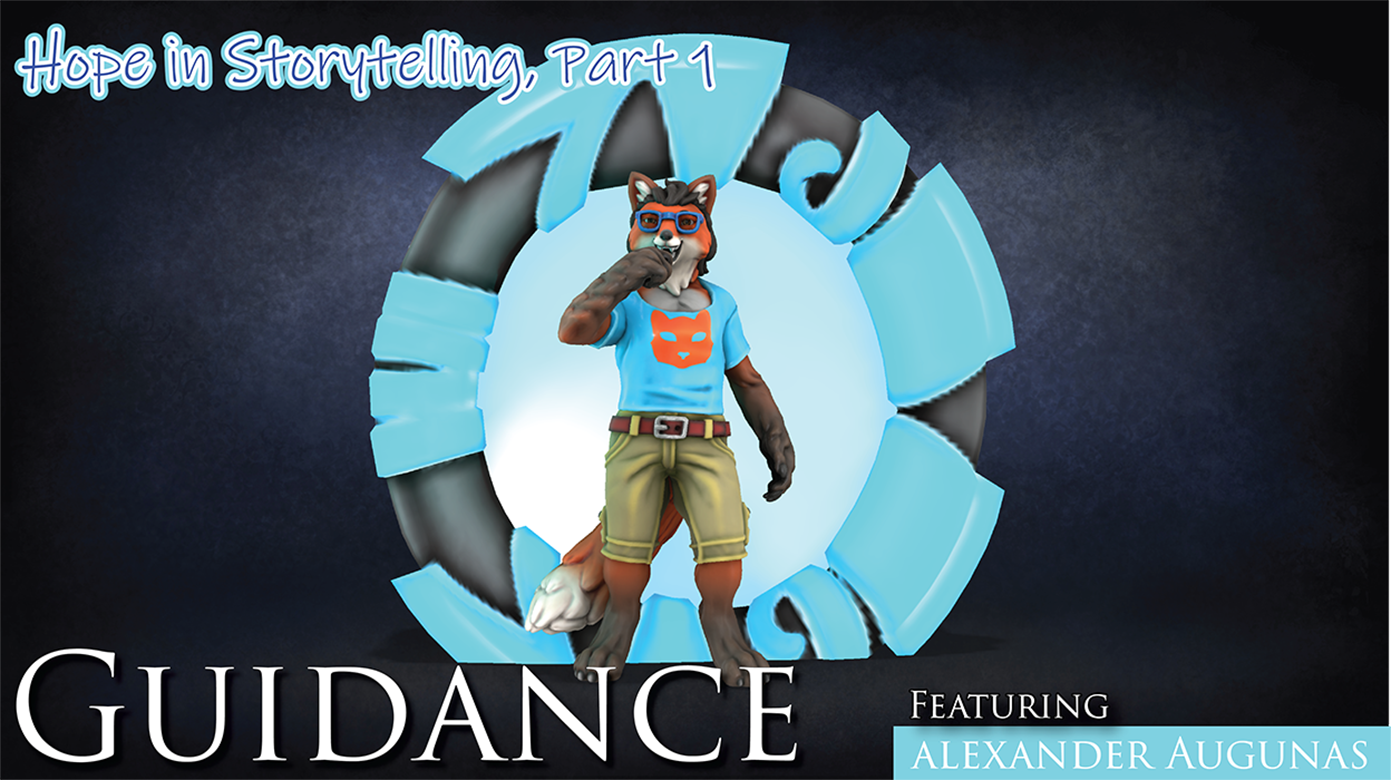Welcome to Guidance, Private Sanctuary’s source for tips and techniques for the Pathfinder Roleplaying Game, written by Everyman Gamer Alexander Augunas. Today, we’re going to be talking about what, exactly, intrigue in an RPG is.
As much as we at the Know Direction Network hate to admit it, Intriguing April is winding down to a close. This time next week, I’ll be back to regular, boring, old blog topics. (Which I hope are never THAT boring!) But for all of the Intrigue-themed stuff that Anthony, Ryan, Perram, and I have done over the past month, I have to stop and ask myself: just what IS intrigue, anyway? I mean, we’ve devoted an entire month to the topic and we brandish the word around like some sort of crazy, grammatical rallying cry, but I think it’s a topic that’s worth exploring. Just what, exactly, makes a game an “intrigue” game anyway?
That, my friends, is what we’re going to explore in today’s installment of Guidance!
Defining Intrigue
Whenever there’s something that I want to know, the first thing that I personally do is Google it, so let’s start there. A quick Google search gives me the following definition for “intrigue:”
Verb:
- Arouse the curiosity or interest of; fascinate.
- Make secret plans to do something illicit or detrimental to someone.
Noun:
- The secret planning of something illicit or detrimental to someone; a secret love affair.
- A mysterious or fascinating quality.
Now, I wasn’t entirely sure that this was the exact definition I was looking for, because a lot of what has been described as, “intrigue,” to me didn’t necessarily fit this definition, so I focused my search and looked again. I tried a bunch of keywords, like “social intrigue,” and “magical intrigue.” The only one that gave me a specific return was “political intrigue,” and this is what I got:
Political Intrigue: the use of underhand machinations or deceitful strategies; a plot or crafty dealing; a secret or illicit love affair.
Piecing the Intrigue Together
So already we have some basic ideas for what intrigue is. The common themes are, “curiosity,” “secrets,” “mysterious,” “illicit,” “planning,” “plotting,” and “deceitful.” Basically, intrigue is anything that evokes curiosity and mystery, and that involves plots, schemes, lies, and deceit. So, when we take these ideas and put them into RPGs and fantasy, what do we get?
The obvious answer is Game of Thrones. There is no better mainstream example of intrigue. Period. Basically, we’re looking to make a game where the PCs are navigating a mystery of some kind, or trying to solve a clue or puzzle. Things are happening constantly and they need to figure it out.
Now, where things get complicated is when we try to figure out just where the intrigue is and how the PCs are supposed to interact with it. When you get right down to it, intrigue can come from one of two places: it can be player-driven or it can be player-reactive. Let’s take a bit of time to talk about the two styles, which are ultimately very different but simultaneously similar.
Player-Driven Intrigue
When the players are driving the intrigue, they’re the ones making the plots. They’ve got some sort of goal or objective that they want or need to accomplish, and they’re navigating the courts and learning the tricks to try and make it happen. The players are proactively creating the drama by being the ones trying to navigate the, “norm” with their own issues and agendas. A player-driven intrigue session should look and feel proactive; the PCs are attempting to cause something to happen. An example of player-driven intrigue would be attempting to infiltrate a courtly ball in order to steal the key to get into the dungeon that the PCs need to raid to free a friend from a noble’s clutches.
Player-Reactive Intrigue
Most types of intrigue are going to be player-driven, but the reactive-style intrigue is also popular. In player-reactive intrigue, something has already happened and the players need to figure out why. Rather than creating the web of lies and deception like in sessions of player-driven intrigue, the players need to navigate the webs that were already there, underneath their very noses. In many ways, player-reactive intrigue has a lot in common with playing an occult game because player-reactive assumes that there were secrets under the PCs very nose all along. A player-driven intrigue session should give the PCs a sense of progress, but also the sense that they’re following breadcrumbs to try and reach their ultimate goal rather than blazing new trails. An example of player-reactive intrigue would be investigating the murder of a king by interrogating his subjects.
The Best Way to Play
Although there are different ways to play an intrigue game, the best way to DO it is to include a variety of reactive and proactive intrigue. If there’s too much one-sided investigation, it will feel like the people that the PCs are hounding are either incompetent or simply sitting back, waiting for their turn to fight the PCs like an MMO boss encounter. If the PCs have to do everything and look for everything without anyone ever getting an edge over them, however, they will likewise feel that their opponents are incompetent. Half the fun of an intriguing game is the back-and-forth, the cat-and-mouse relationship that stems from the PCs and their enemy circling each other relentlessly, waiting for the perfect moment not only to strike, but to expose the other and ruin them both socially and physically. In short, effective intrigue needs to react organically to the PC’s presence, playing defensive when the PCs strike and going on the offensive when they are at their most vulnerable.
I hope everyone’s been enjoying Intriguing April. As always, we at the Know Direction Network have had a blast to bring this special coverage to you. If you like what you’ve read, consider leaving a comment below or on our forums. Tell me about how you’ve handled intrigue in your games; leave us the good, the bad, and the ugly. Until next time, I’m Alex Augunas, and I’m signing off…intriguingly!
Alexander “Alex” Augunas has been playing roleplaying games since 2007, which isn’t nearly as long as 90% of his colleagues. Alexander is an active freelancer for the Pathfinder Roleplaying Game and is best known as the author of the Pact Magic Unbound series by Radiance House. Alex is the owner of Everyman Gaming, LLC and is often stylized as the Everyman Gamer in honor of Guidance’s original home. Alex also cohosts the Private Sanctuary Podcast, along with fellow blogger Anthony Li, and you can follow their exploits on Facebook in the 3.5 Private Sanctuary Group, or on Alex’s Twitter, @AlJAug.




